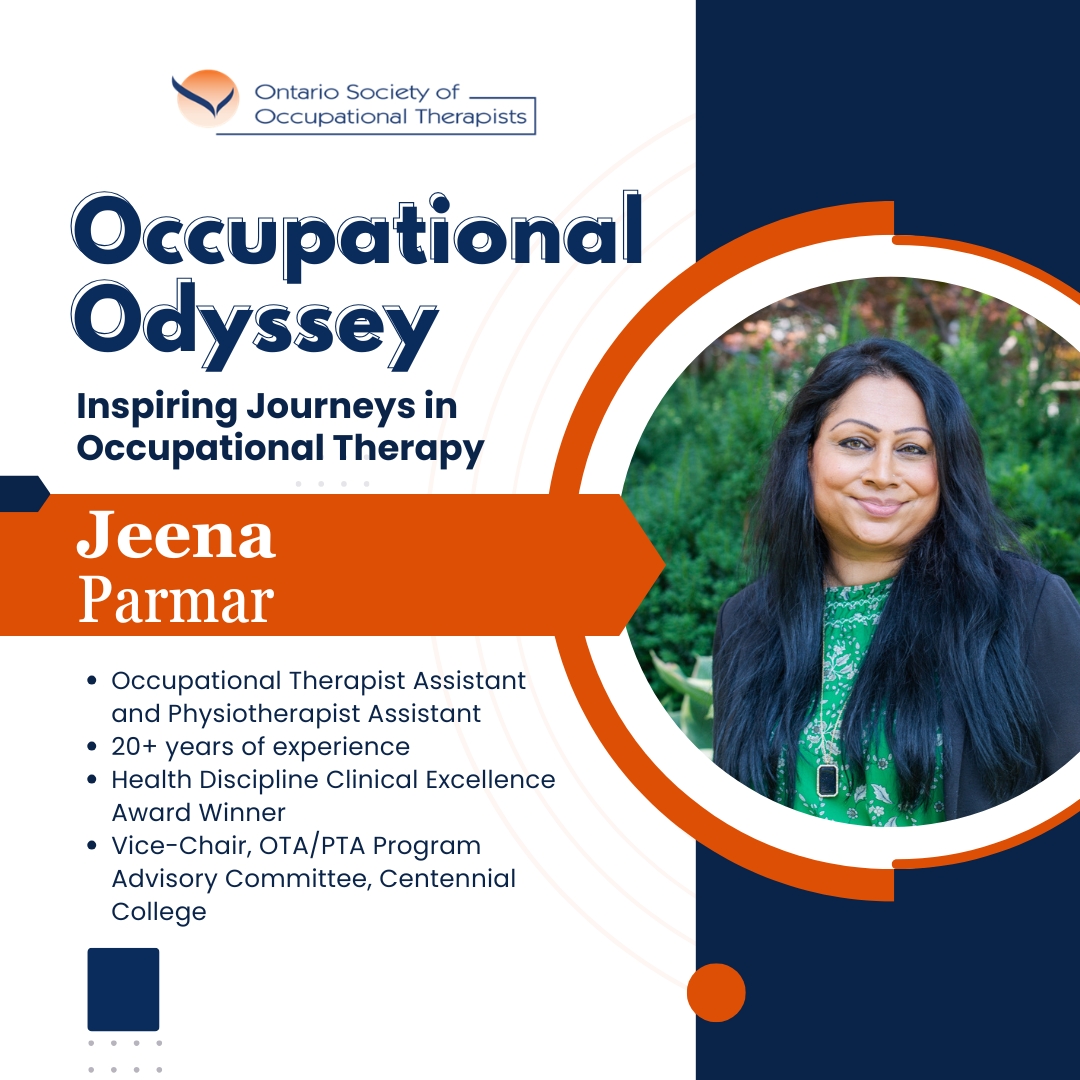Jeena Parmar

My professional journey began many years ago in British Columbia. While pursuing a degree in Psychology, I was presented with a new opportunity to help improve people’s quality of life through an occupational therapy and physiotherapy lens. The role of Occupational Therapist Assistant and Physiotherapist Assistant (OTA/PTA) embraced a holistic perspective, which I greatly valued in my day-to-day interactions.
It has been an exciting experience to be a part of a unique profession that continues to evolve and make positive strides through advocacy and research. Working under the supervision of a therapist, the occupational therapist assistant role involves implementing rehabilitation programs to maintain and enhance functional abilities and independence. Though not yet regulated, momentum is building across various platforms for this role to gain formal recognition, as we increasingly acknowledge the importance of collaboration. The opportunities arising from these open conversations have led to effective, positive outcomes. OTAs now have the opportunity to be members of OSOT and CAOT, which allows for greater representation of the profession and underscores the importance of being “stronger together.”
My career as an OTA/PTA was set in motion by exploring diverse settings, as is often expected when starting at an entry-level position. I gained experience and skills in long-term care, inpatient/outpatient rehabilitation, pediatrics, psychiatry, orthopedics, neurology, and general medicine. Eventually, I found myself working in acute care at St. Michael’s Hospital in Toronto for more than 18 years, specializing in cardiology, vascular surgery, and coronary intensive care. During my time there, I was honoured with the Health Discipline Clinical Excellence Award.